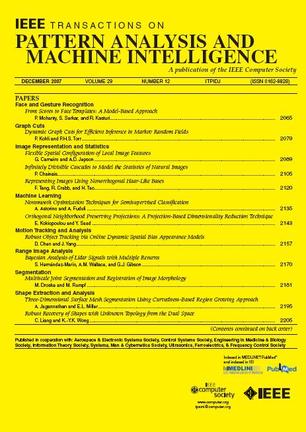Hybrid Gaussian Deformation for Efficient Remote Sensing Object Detection.
IF 18.6
1区 计算机科学
Q1 COMPUTER SCIENCE, ARTIFICIAL INTELLIGENCE
IEEE Transactions on Pattern Analysis and Machine Intelligence
Pub Date : 2025-06-24
DOI:10.1109/tpami.2025.3583006
引用次数: 0
Abstract
Large-scale high-resolution remote sensing images (LSHR) are increasingly adopted for object detection, since they capture finer details. However, LSHR imposes a substantial computational cost. Existing methods explore lightweight backbones and advanced oriented bounding box regression mechanisms. Nevertheless, they still rely on high-resolution inputs to maintain detection accuracy. We observe that LSHR comprise extensive background areas that can be compressed to reduce unnecessary computation, while object regions contain details that can be reserved to improve detection accuracy. Thus, we propose a hybrid Gaussian deformation module that dynamically adjusts the sampling density at each location based on its relevance to the detection task, i.e., high-density sampling preserves more object regions and better retains detailed features, while low-density sampling diminishes the background proportion. Further, we introduce a bilateral deform-uniform detection framework to exploit the potential of the deformed sampled low-resolution images and original high-resolution images. Specifically, a deformed deep backbone takes the deformed sampled images as inputs to produce high-level semantic information, and a uniform shallow backbone takes the original high-resolution images as inputs to generate precise spatial location information. Moreover, we incorporate a deformation-aware feature registration module that calibrates the spatial information of deformed features, preventing regression degenerate solutions while maintaining feature activation. Subsequently, we introduce a feature relationship interaction fusion module to balance the contributions of features from both deformed and uniform backbones. Comprehensive experiments on three challenging datasets show that our method achieves superior performance compared with the state-of-the-art methods.基于混合高斯变形的高效遥感目标检测。
大规模高分辨率遥感图像(LSHR)由于能够捕捉更精细的细节,越来越多地被用于目标检测。然而,LSHR带来了大量的计算成本。现有的方法探索轻量级骨干和先进的面向边界盒回归机制。然而,它们仍然依赖于高分辨率输入来保持检测精度。我们观察到LSHR包含广泛的背景区域,可以压缩以减少不必要的计算,而目标区域包含可以保留的细节以提高检测精度。因此,我们提出了一种混合高斯变形模块,根据其与检测任务的相关性动态调整每个位置的采样密度,即高密度采样保留了更多的目标区域并更好地保留了细节特征,而低密度采样降低了背景比例。此外,我们引入了一种双边变形均匀检测框架,以利用变形采样的低分辨率图像和原始高分辨率图像的潜力。其中,变形的深骨干以变形后的采样图像为输入,生成高级语义信息;均匀的浅骨干以原始的高分辨率图像为输入,生成精确的空间位置信息。此外,我们还结合了变形感知特征配准模块,该模块可以校准变形特征的空间信息,在保持特征激活的同时防止回归退化解。随后,我们引入了特征关系交互融合模块来平衡变形和均匀主干特征的贡献。在三个具有挑战性的数据集上进行的综合实验表明,与目前的方法相比,我们的方法取得了更好的性能。
本文章由计算机程序翻译,如有差异,请以英文原文为准。
求助全文
约1分钟内获得全文
求助全文
来源期刊
CiteScore
28.40
自引率
3.00%
发文量
885
审稿时长
8.5 months
期刊介绍:
The IEEE Transactions on Pattern Analysis and Machine Intelligence publishes articles on all traditional areas of computer vision and image understanding, all traditional areas of pattern analysis and recognition, and selected areas of machine intelligence, with a particular emphasis on machine learning for pattern analysis. Areas such as techniques for visual search, document and handwriting analysis, medical image analysis, video and image sequence analysis, content-based retrieval of image and video, face and gesture recognition and relevant specialized hardware and/or software architectures are also covered.

 求助内容:
求助内容: 应助结果提醒方式:
应助结果提醒方式:


